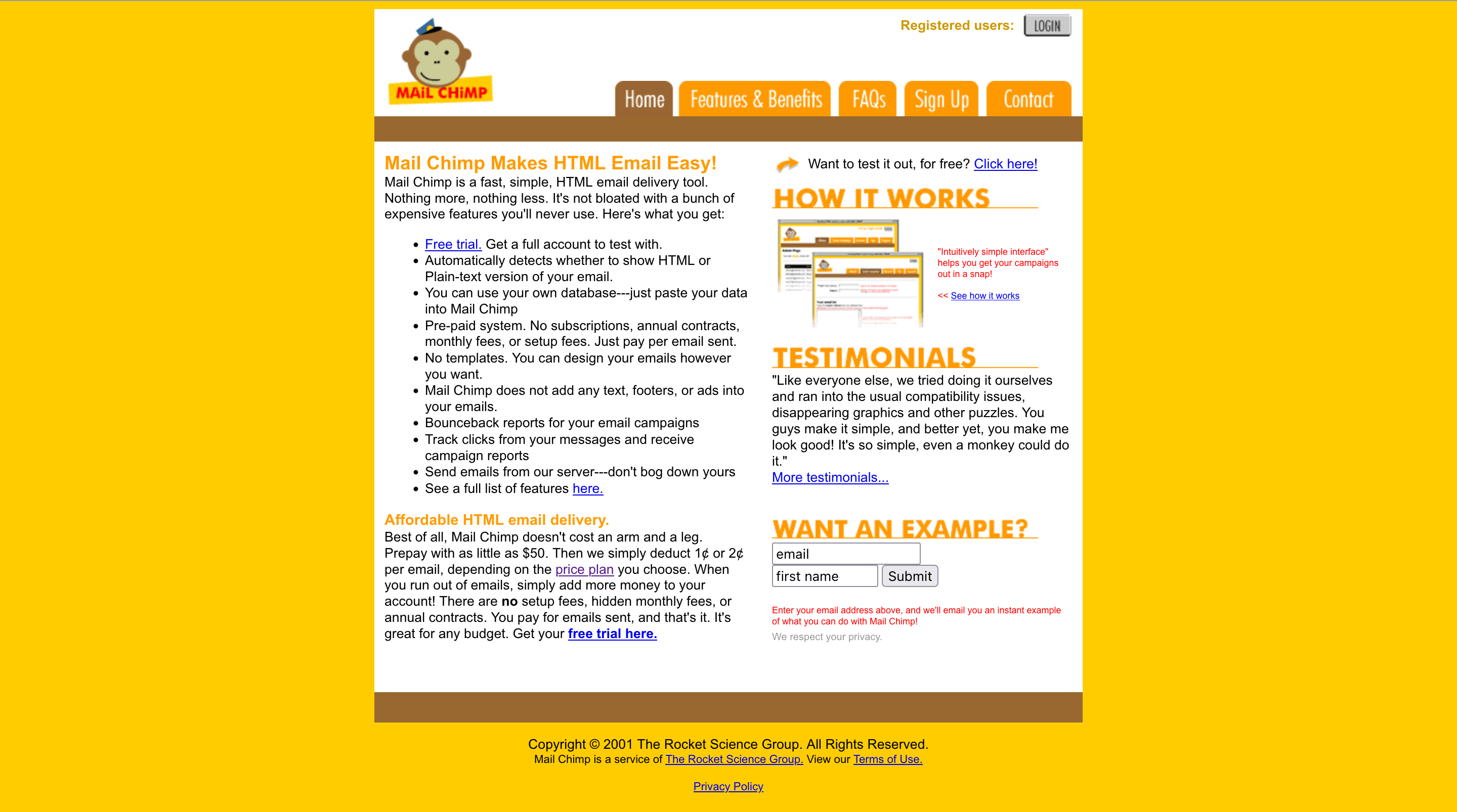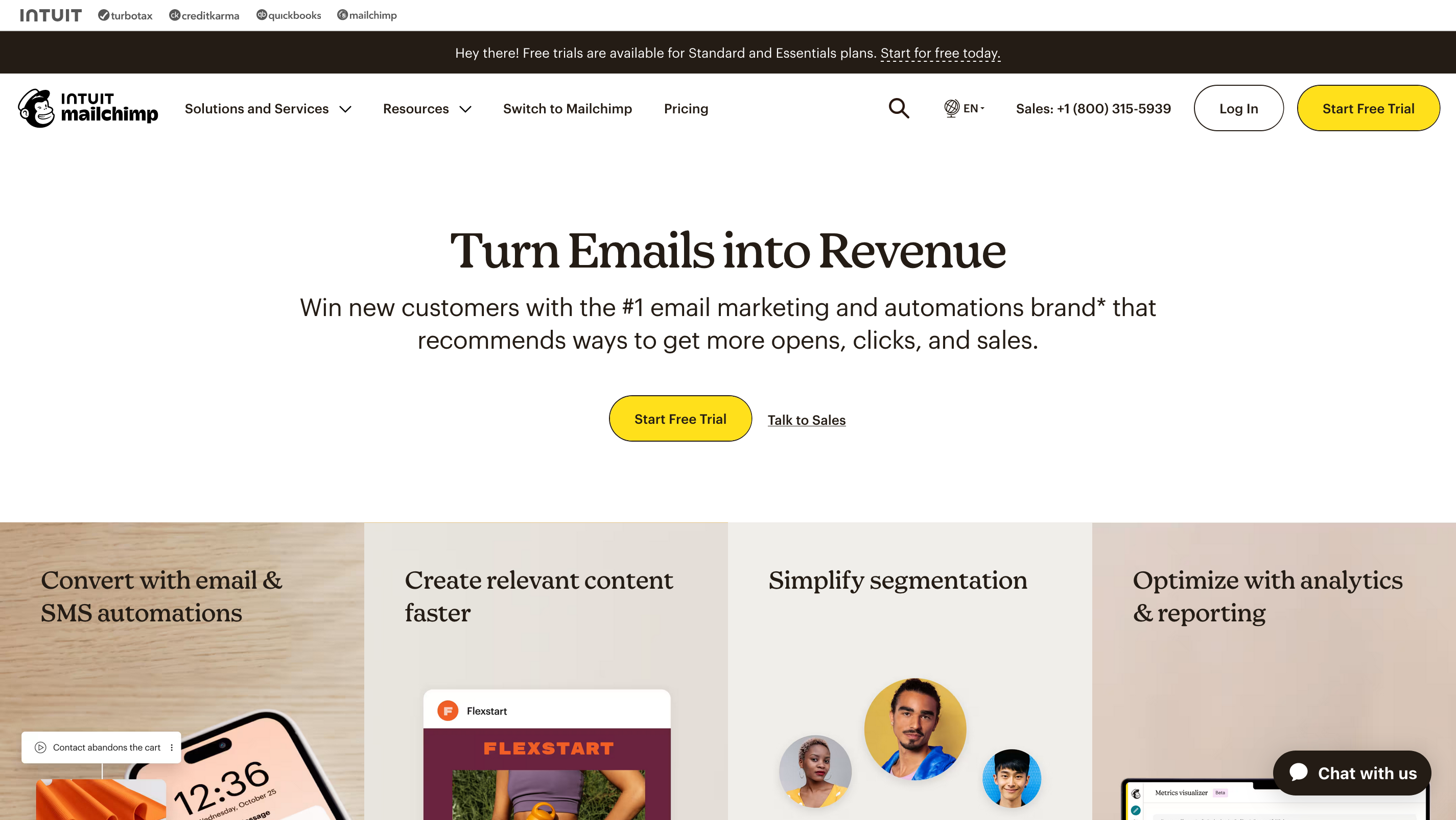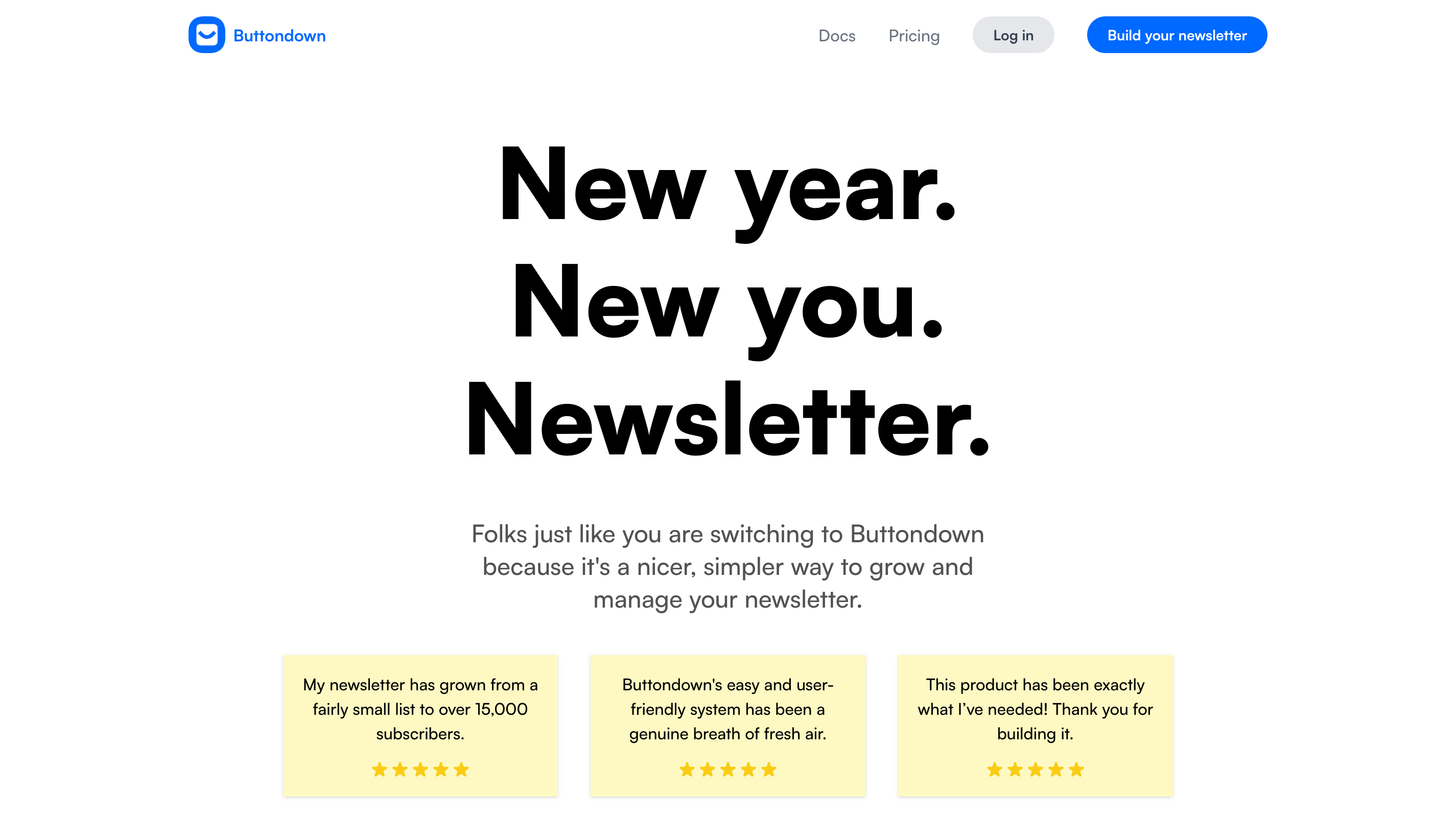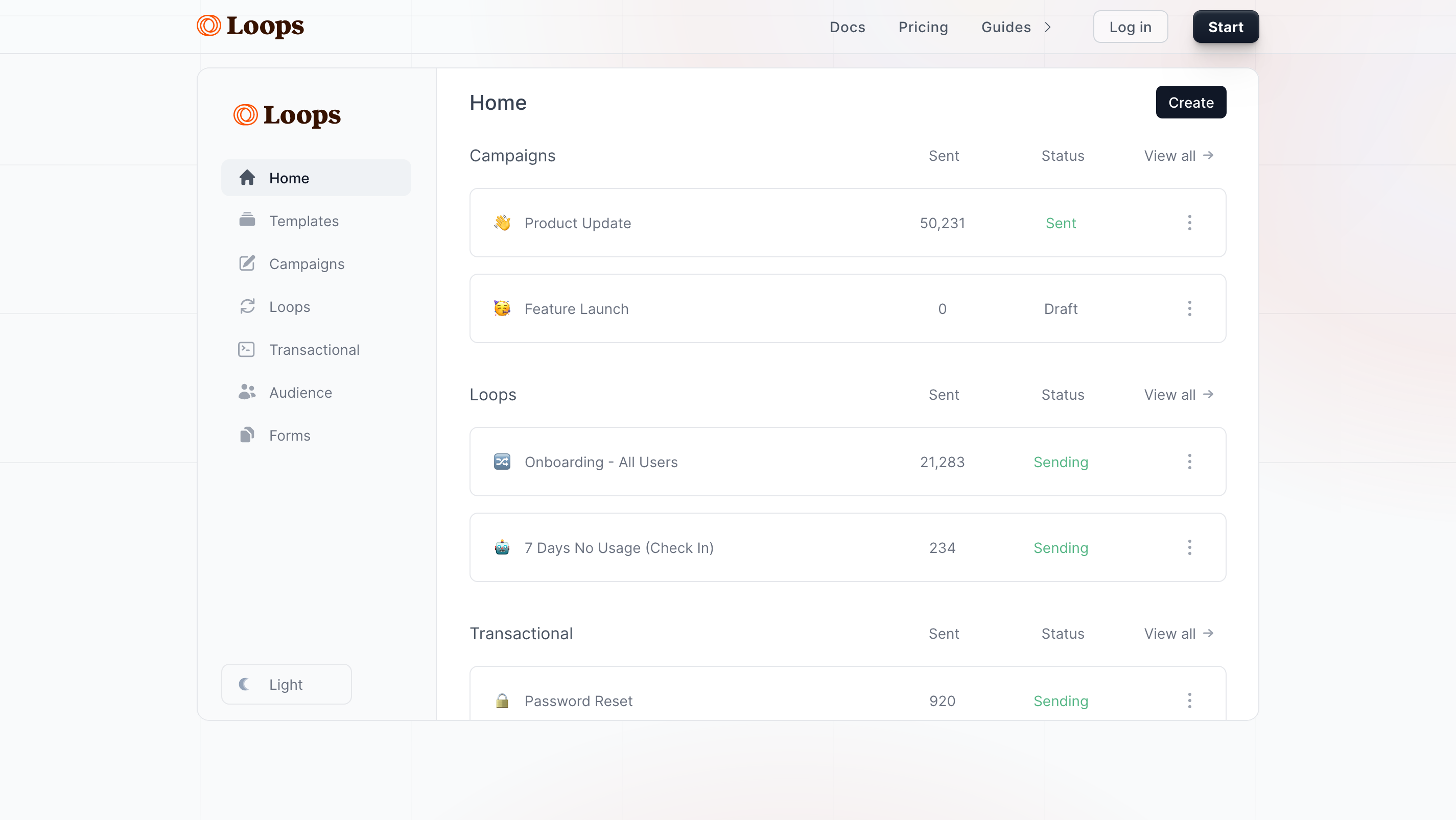Mailchimp, an email marketing tool, launched in 2001. At the time of writing, Mailchimp is 23 years old.
When it launched, its purpose as a focused tool couldn’t be more obvious.

Mail Chimp is a fast, simple, HTML email delivery tool. Nothing more, nothing less. It’s not bloated with a bunch of expensive features you’ll never use.
The first few lines on their website in 2001 state it explicitly.
Contrast that to today.

It’s a “Marketing, Automation, and Email Platform” that houses over a dozen services, from a website builder to a CRM. Oh, and how about some tax preparation software to go along with it? When a tool becomes a platform, it can become overwhelming for people who want to accomplish a single, specific thing.
One could argue that if people primarily used it for marketing in 2001, its purpose is still the same today, but as a platform it helps people discover new ways to generate revenue through marketing. That’s certainly true, and some would be pleased by it. However, for people who just want to send out emails, perhaps for a newsletter or to communicate news to their customers, it can be frustrating to wade through dozens of other features and complicated pricing.
Though I haven’t personally used Mailchimp, I’ve used many other tools that became platforms, like GitLab, and experienced the same. This person sums up my experience with GitLab pretty well, and most platforms tend to follow a similar path. The nuance that made the original tool wonderful is lost because the incentives for preserving that nuance in the face of rapid expansion aren’t there.
What does that nuance look like, and why is it present in small, focused tools? Buttondown is a relatively new service for sending out email newsletters. Because it’s only focused on email newsletters, the owner has nothing else to do but to make it great for sending newsletters, as that’s the only thing he’s getting paid for. That means listening to what newsletter-sending customers are saying and making it better for them. Mailchimp? I’d be surprised if they actually do something with your feedback in under 5 years.

However, Buttondown is only for newsletters. What about other types of email? With Mailchimp moving away from being just an email sending tool, a lot of room is created for new tools to take its place, and for them to do better in those niches.
Loops is one of those that I’ve been hearing about, but another I haven’t used. But from what I can tell on the website, it’s simpler to use and has clearer pricing. They cater to the types of emails that software companies send to their users.

There are certainly many more newcomers that I won’t list here, but with that brief commentary on Mailchimp and those two alternatives, I hope to illustrate two things.
The first, is that as a consumer of software products, if you’re using something that’s gotten a little too big or has been around for a long time and is now a large company, you might be better served by finding an alternative that meets your exact needs, if you’re using just a handful of features of the platform. You’ll be surprised—with a lot of these smaller products, you can simply reach out to the owner and they’ll change things for you. You’ll never get that with a large company.
The second, is that as a builder of software products, the wake left by a tool which became a platform represents a huge opportunity. It’s a chance to create something which caters to a specific need, a new tool that is “nothing more, nothing less” than the solution to that need.